THE PLEASURE OF OLD TRAVEL GUIDES – PART I
When I can’t travel, it’s time to pull out one of my small collection of travel guidebooks. I’ve picked them up in used bookstores and antiquarian book fairs over the years to allow me to time-travel backwards. Other travelers at other times saw new sights differently; if they had a camera their viewfinder found different angles; and as they moved from place to place their mode of transport was often different than anything I’ve experienced. What could be better on a rainy day than to imagine myself somewhere else in location and time?
First in the stack is my Plan de Paris – rues, metro, autobus was owned by a Carina Moravec. The guide is undated but includes telephone numbers for embassies that no longer exist like Yugoslavia and East Germany along with that for Pan American World Airways. The Musee d’Orsay doesn’t appear yet, but the traveler apparently found some good restaurants with names that are penciled in on several pages. The maps are wonderful, and it would be easy to find transportation to the Rue de Rivoli or anywhere else including suburbs but strangely, no connections to either airport are listed.
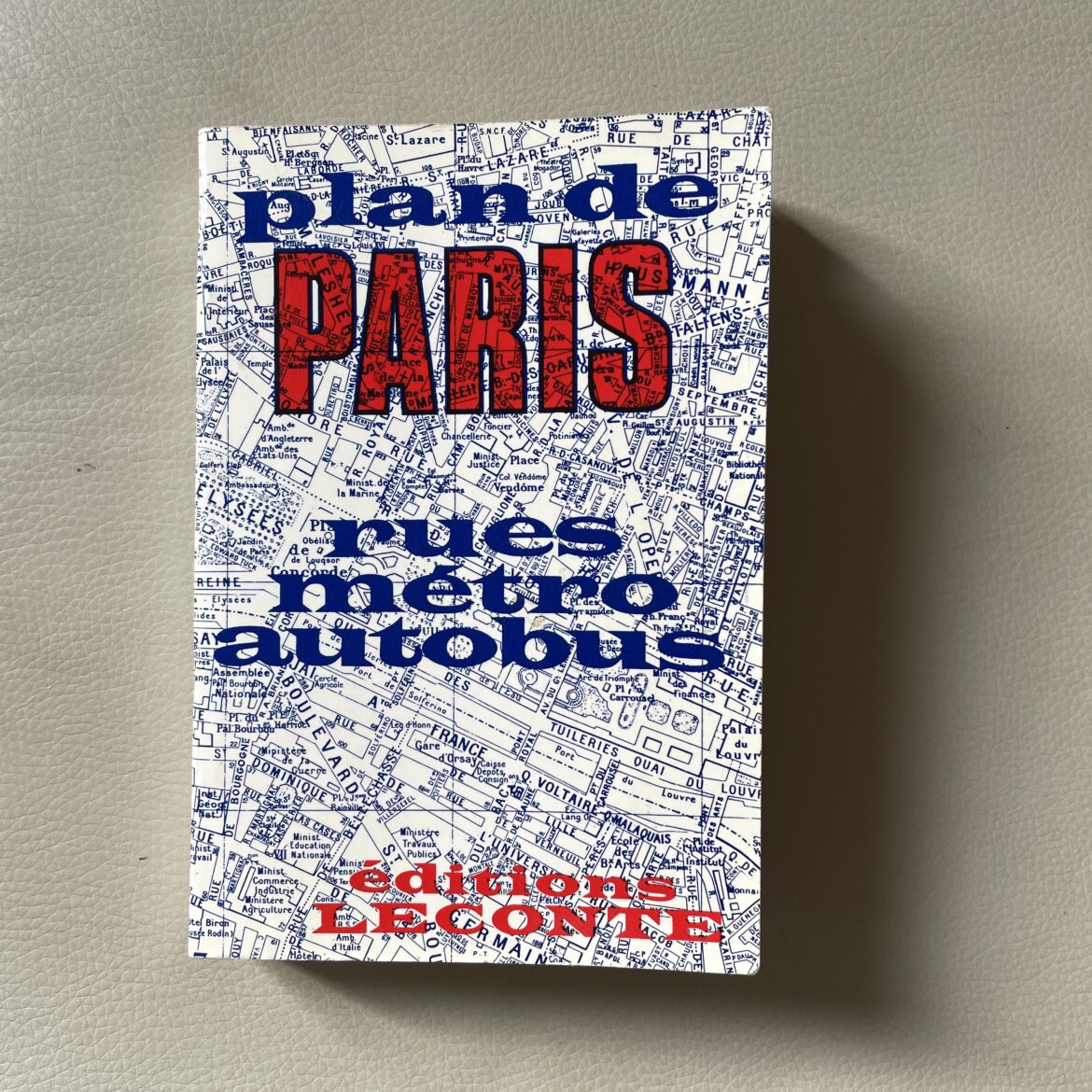

The 1967 guide to Istanbul, Sander’s pocket guide, was printed in England. It is full of rather poor drawings of the major sights. It wouldn’t be useful for travel now as it shows none of the three magnificent suspension bridges built over the Bosporus – the first one only opened in 1973. No subway either and the rate of exchange for the Turkish Lira was 14 lira to $1.00. In 2005 a revaluation that changed a million lira to one so the tourist guide’s prices have to be multiplied by a million!
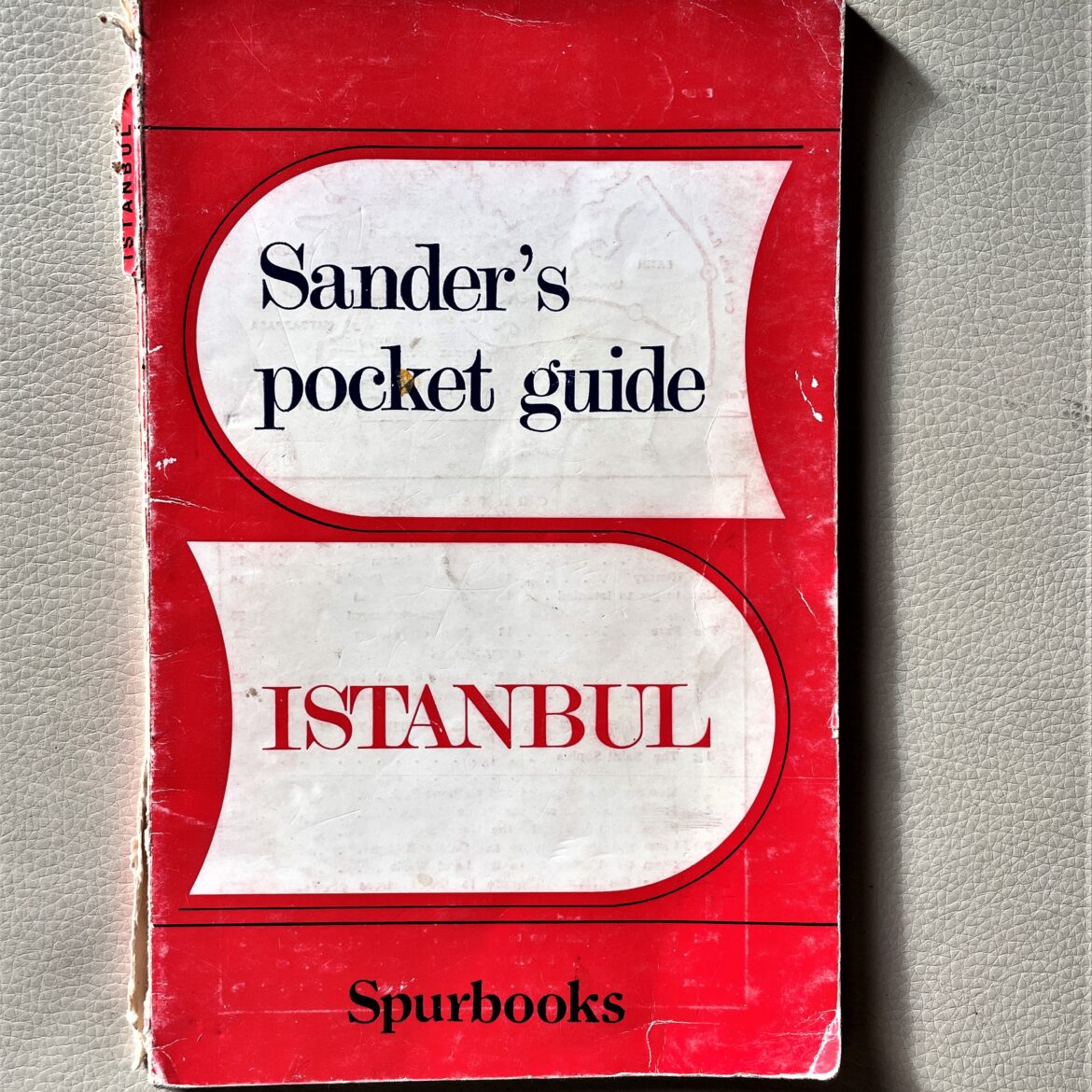
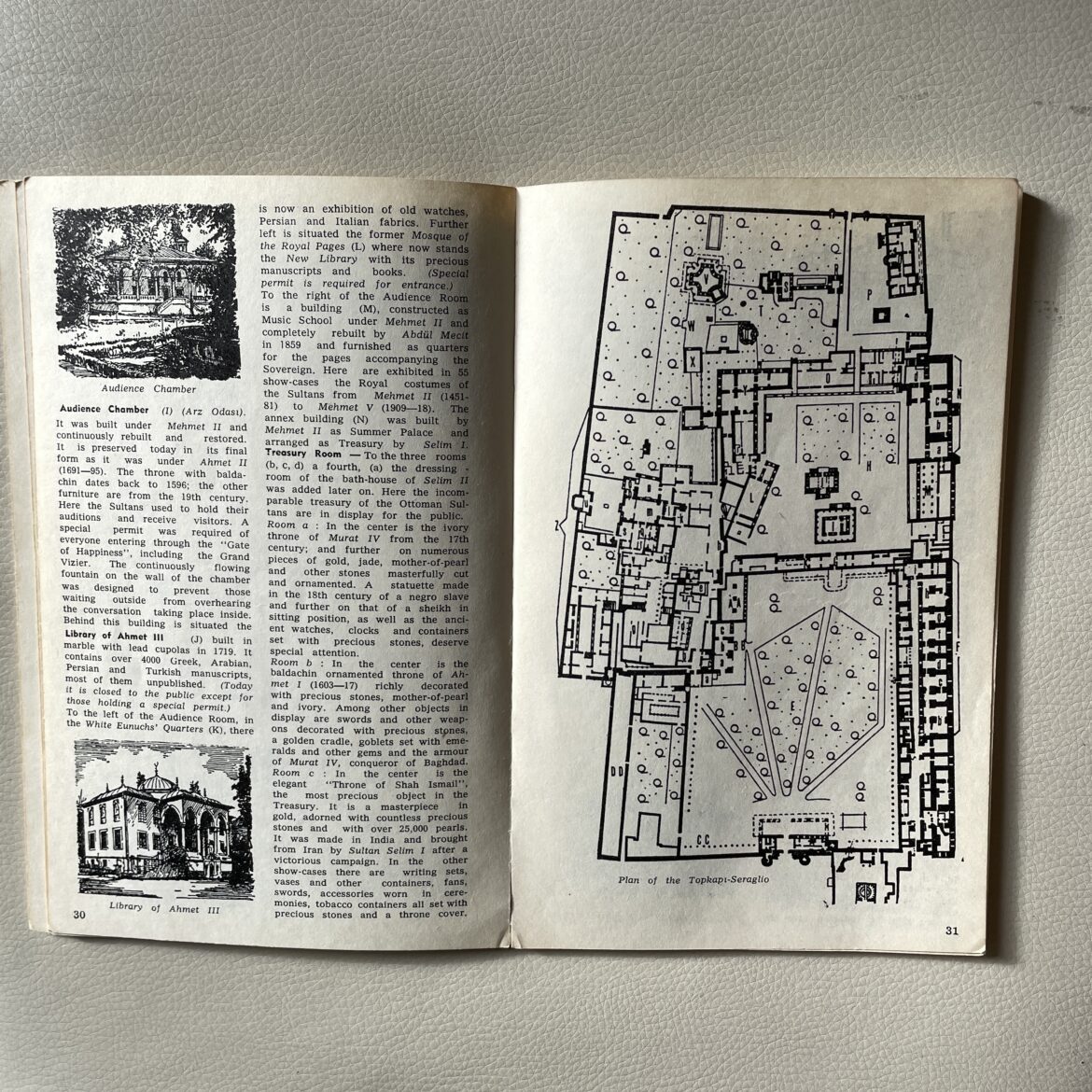
Far more fun is my Muirhead’s Short Guide to London, part of the famous Blue Guides. It’s a third edition printed in 1933. It is inscribed “J W Marsh, 12/25/34, Theo & Winifred” – a Christmas gift for some travelers. It has a wonderful map of The Tube that says “A new design for an old map. We should welcome your comments. Please write to Publicity Manager, 55, Broadway Westminster, S.W.1”
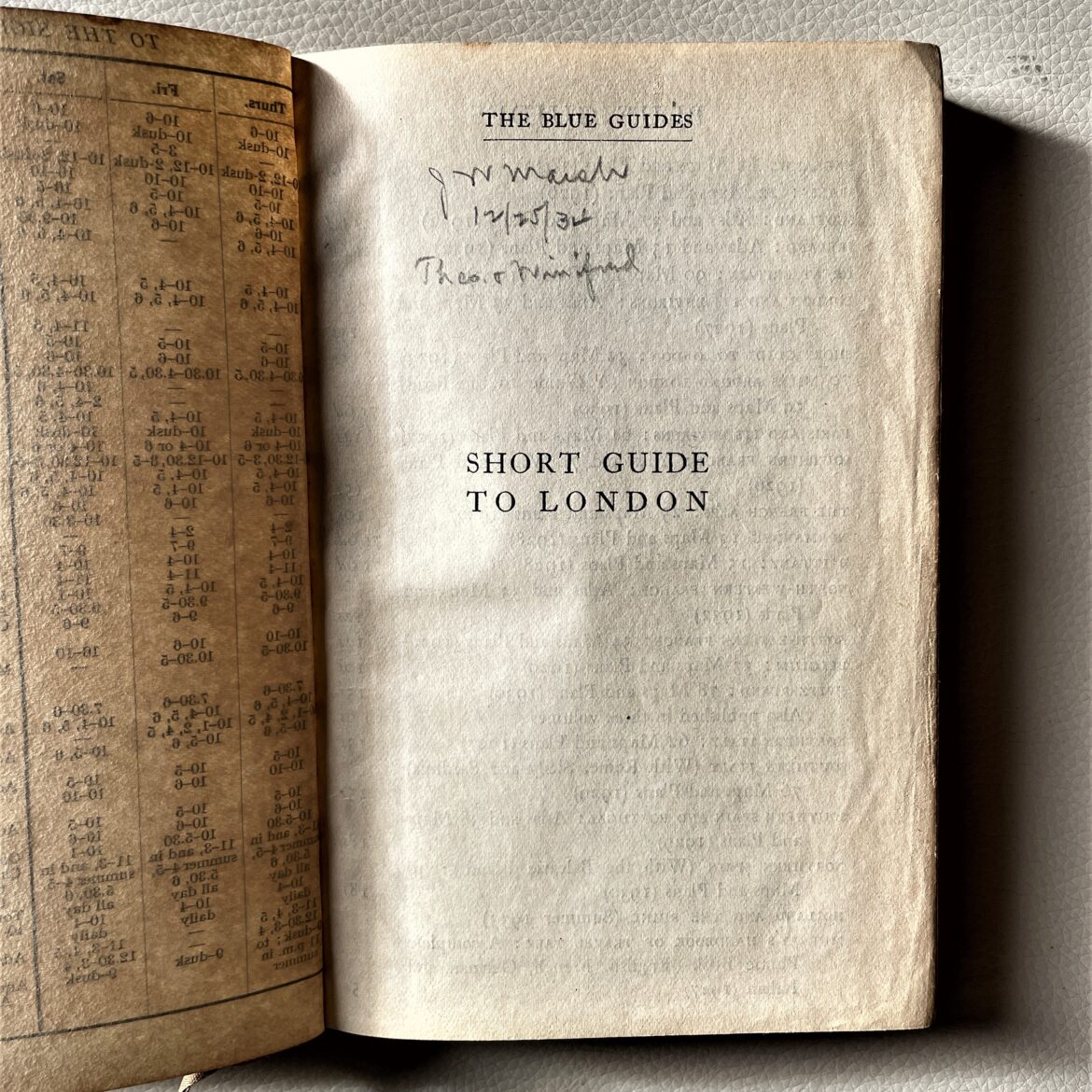
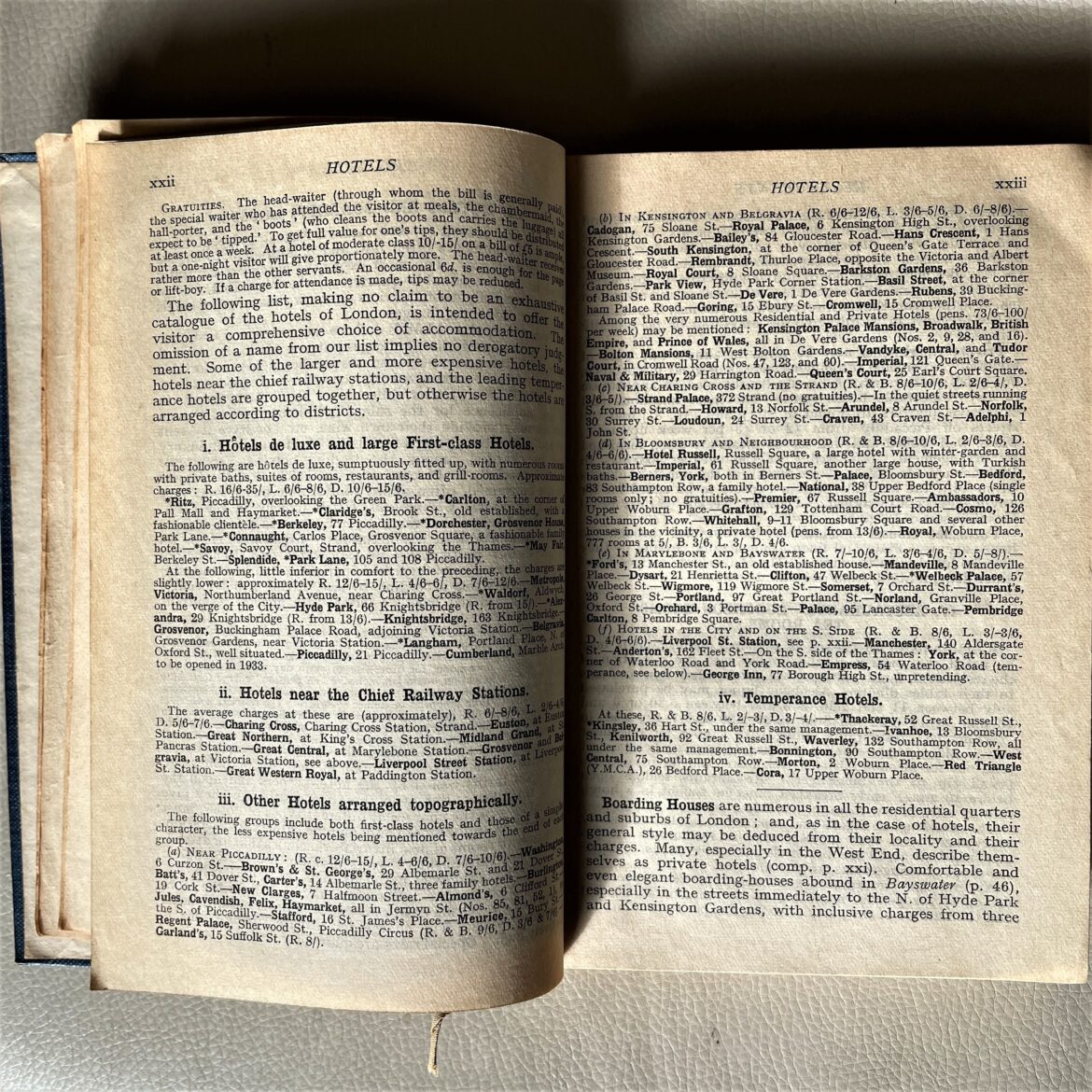
The major sites are all in the same place but travelers in the 1930s would have far different experiences than now. Do temperance hotels still exist I wonder? As a nod to ‘modern’ times the guide says Sundays were no longer as dull as previously used to be because cinemas open at 6:00 p.m. rather than being closed all day.
Either Marsh or Theo and Winifred could walk by the offices for The Irish Free State, India, or Southern Rhodesia. Did they ever imagine that none of these places would no longer be part of the Empire? That there would be no empire at all? That Berkeley Square would feature in a World War II song, A Nightingale Sang in Berkeley Square? Or that St. Paul’s would miraculously survive an unimaginable bombing?
The people with their guidebook used the red and blue ribbons that came attached. Bloomsbury got the red ribbon and The British Museum with the blue one, but somehow I can’t help wondering what might have happened to Theo and Winifred or Marsh. Did they survive the war safe in Canada or South Africa or were they among the many who were lost? It all seems a bit melancholy.
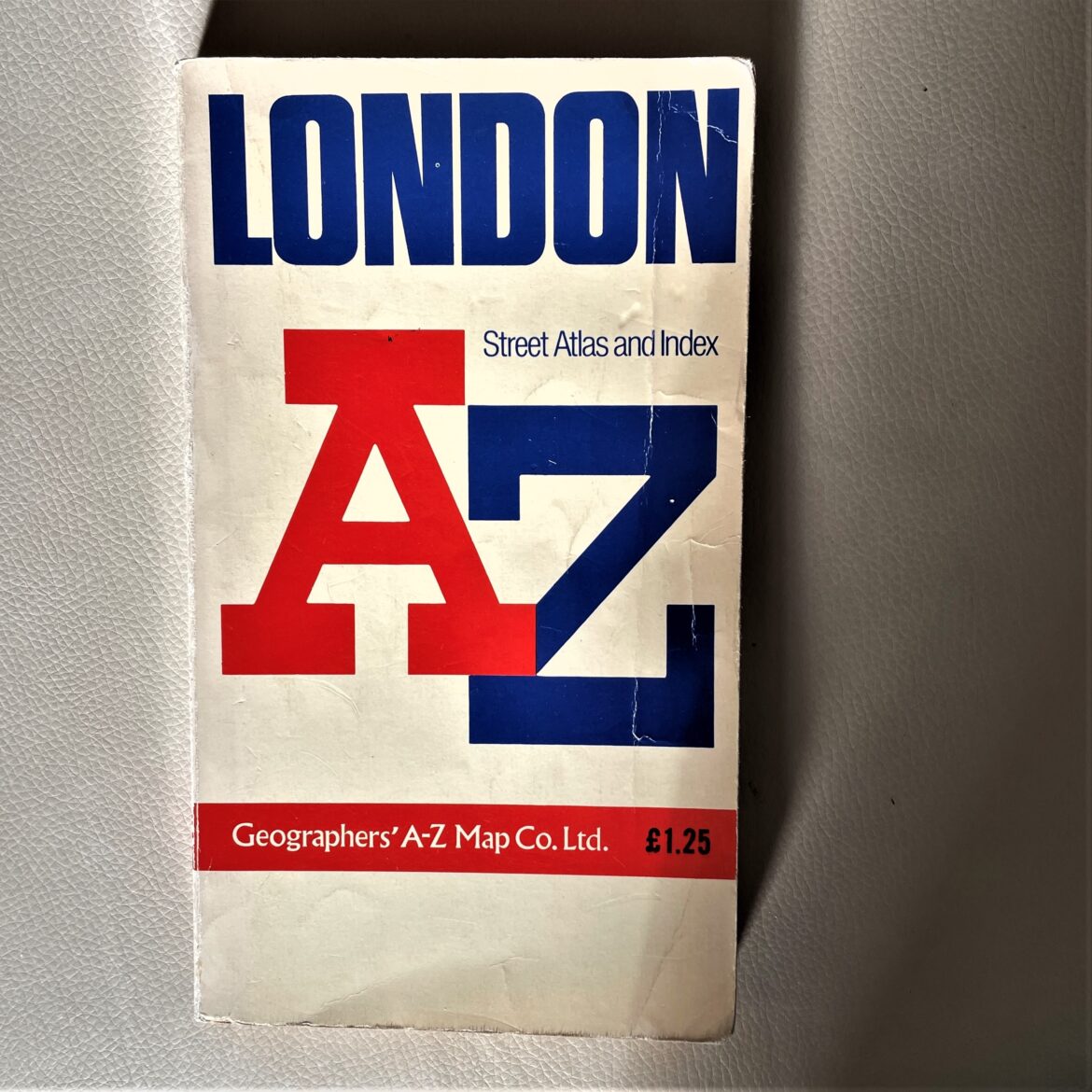
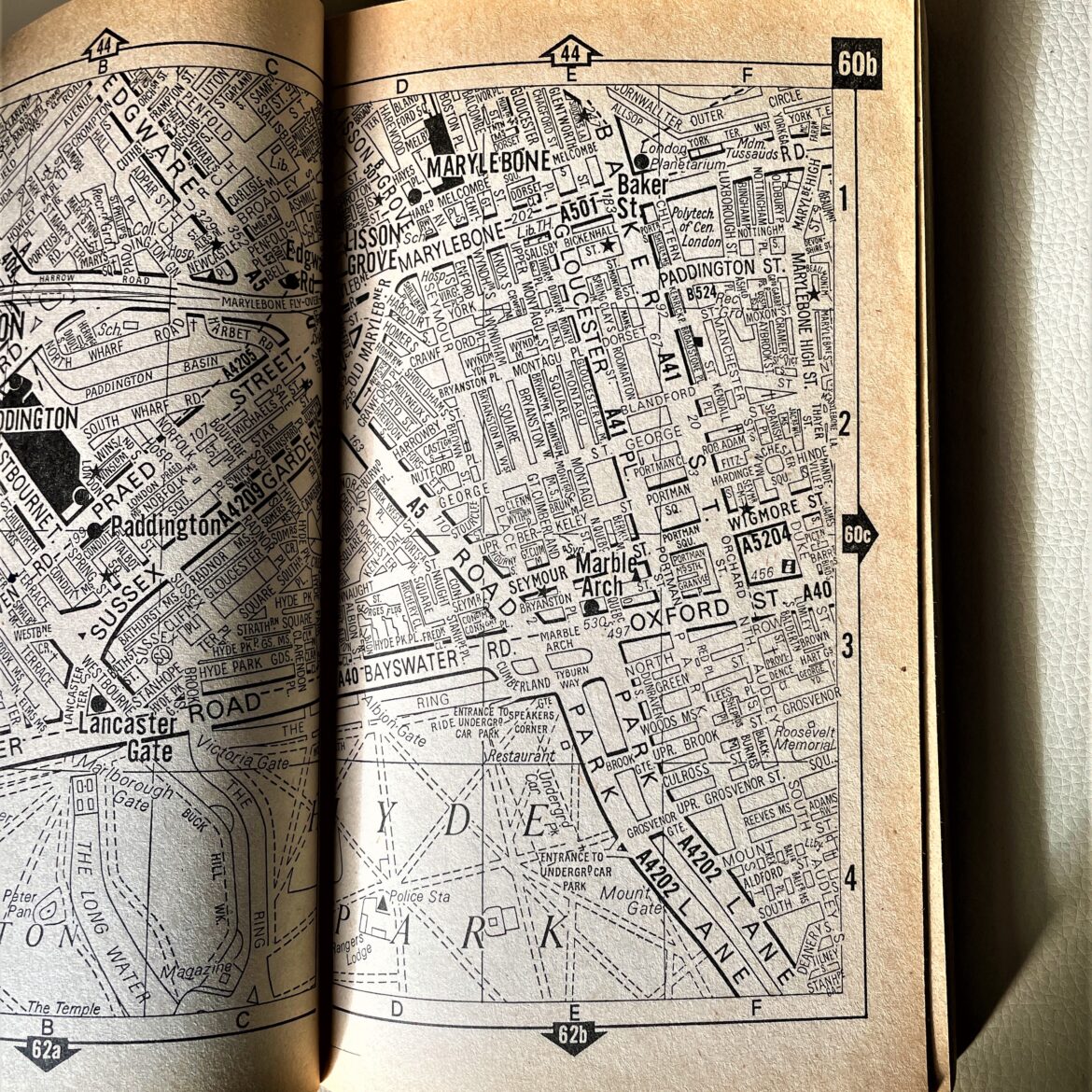
The guide pairs well with an undated, yellowed and dog-eared London A-Z Street Guide I picked up somewhere. London is crammed with tiny streets and a magnifying glass would be helpful when putting the pages to use. I know I’ve never used it to tour, but it is great for following stories set in London even though 221B Baker Street isn’t a real address. (The Holmes Museum is in the same block however.) But who doesn’t want to walk on Green Dragon or Honeypot Lanes or perhaps Prioress Street?
If nothing else, the two books are great for reading period British mysteries, my favorite.
My favorite of the non-Italian guides is a 1912 Baedeker’s Palestine and Syria with Routes through Mesopotamia and Babylonia and the Island of Cyprus. It’s a Fifth Edition so not monetarily valuable. The flyleaf says it was owned by D. P. Wetherald, who was in Cairo on March 7, 1914, only a few short months before Europe and the Middle East were convulsed by World War I. It wasn’t long before Lawrence of Arabia dashed around (think Peter O’Toole and Omar Sharif) doing in the Ottomans, and a few years before Gertrude Bell and Winston Churchill redrew the map of the Middle East, setting off unrest and war that has never really ended. I originally thought that someone inscribing their name in a book with only initials would be male. So maybe Wetherald was a British secret agent fomenting unrest for Great Britain to gain the upper hand for the empire?
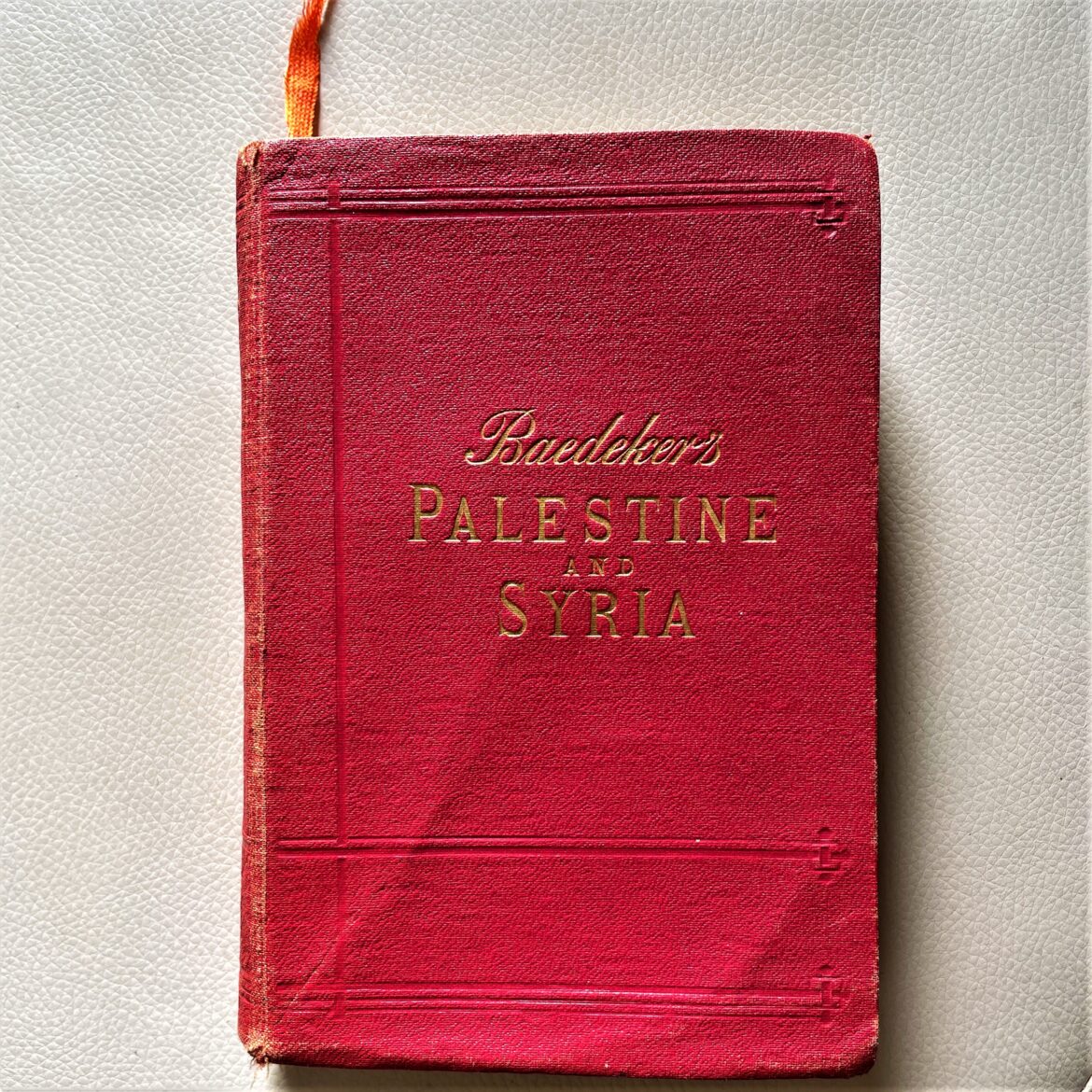
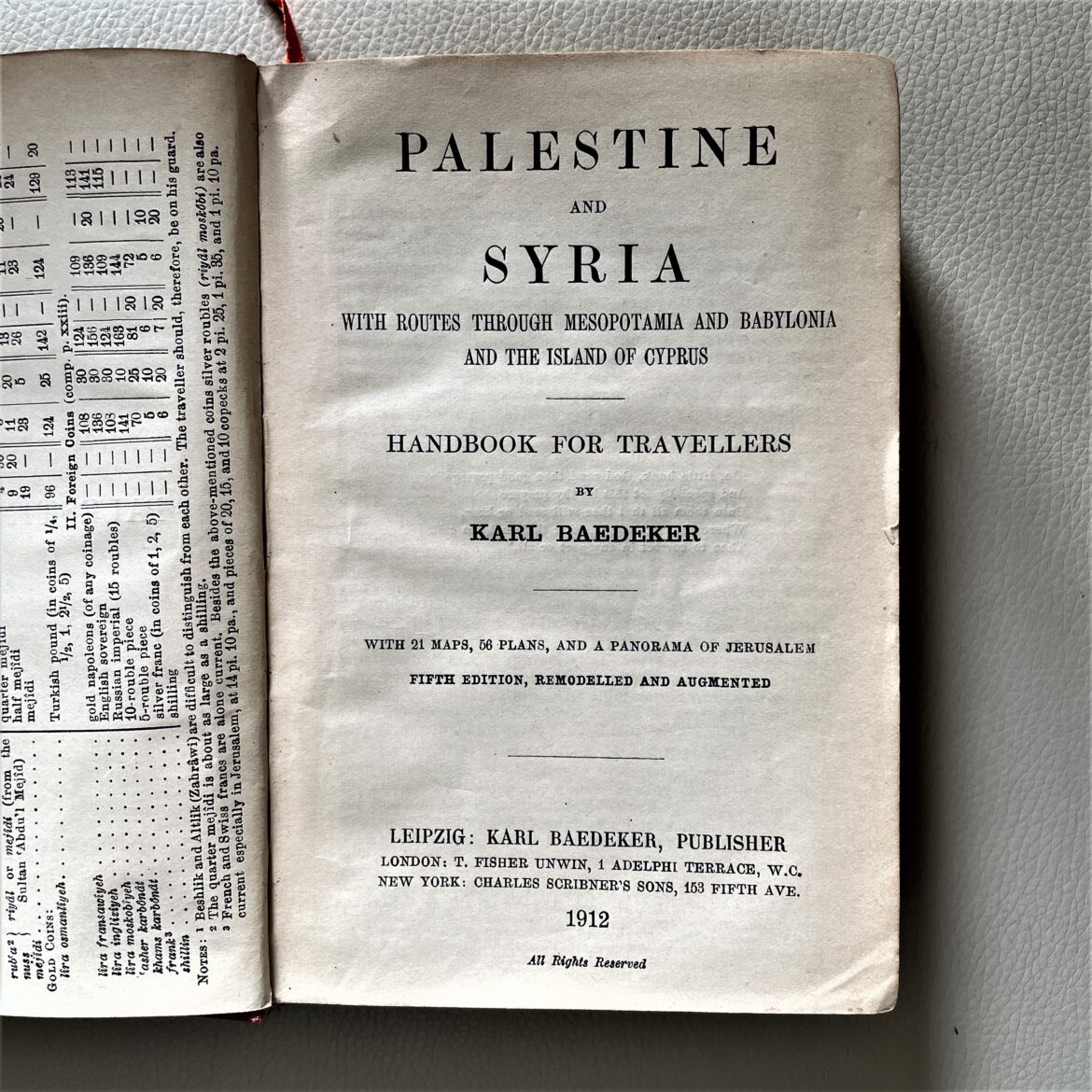
The red-bound book is crammed with pages of advice like how to contract with a dragoman (tour manager): “breakfast shall be served at … and shall consist of …” He must provide ladies saddles if applicable, dining tents, pay the locals, and always be courteous and obliging, etc. There are charts for comparing the myriad different currencies including gold napoleons, mejidis, piastres and beshliks, and useful expressions in Arabic such as how to find a toilet. There is a whole chapter on “Intercourse with Orientals” including avoiding familiarity and how time means nothing. Rather different to today’s guides.
My traveler penciled in dates for some of the stops. The first one is The Church of the Holy Sepulcher in Jerusalem on March 11. My assumption about the traveler changed to doubt when I found the remains of tiny wildflowers pressed into the pages for Acre, famous for its Crusader castle, and on the page describing the Cedars of Lebanon which the traveler visited in early April along with the ruins of Baalbek sometime after a stay in Damascus Syria. Both these sites are marked with the blue and red silk ribbons that came with the book.
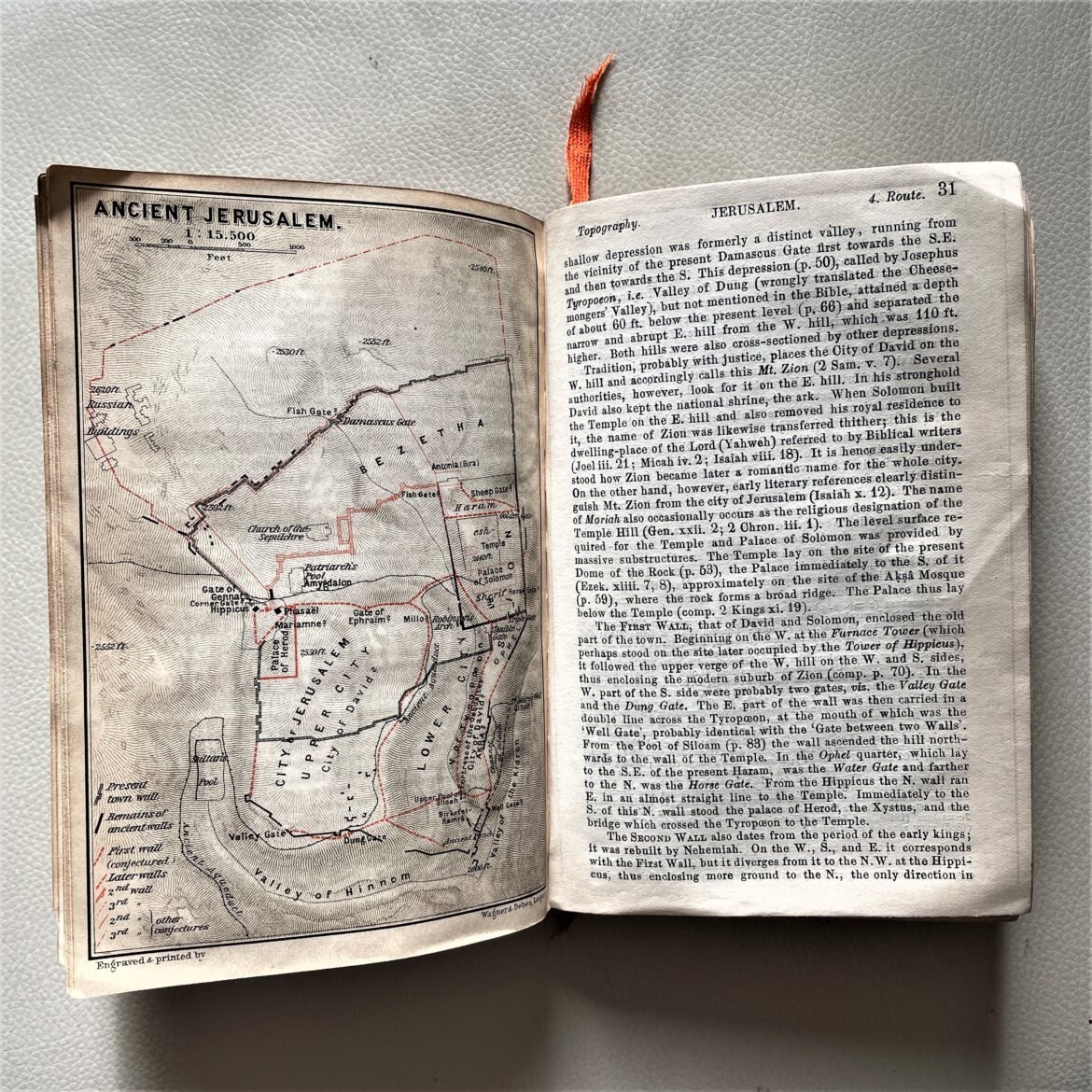
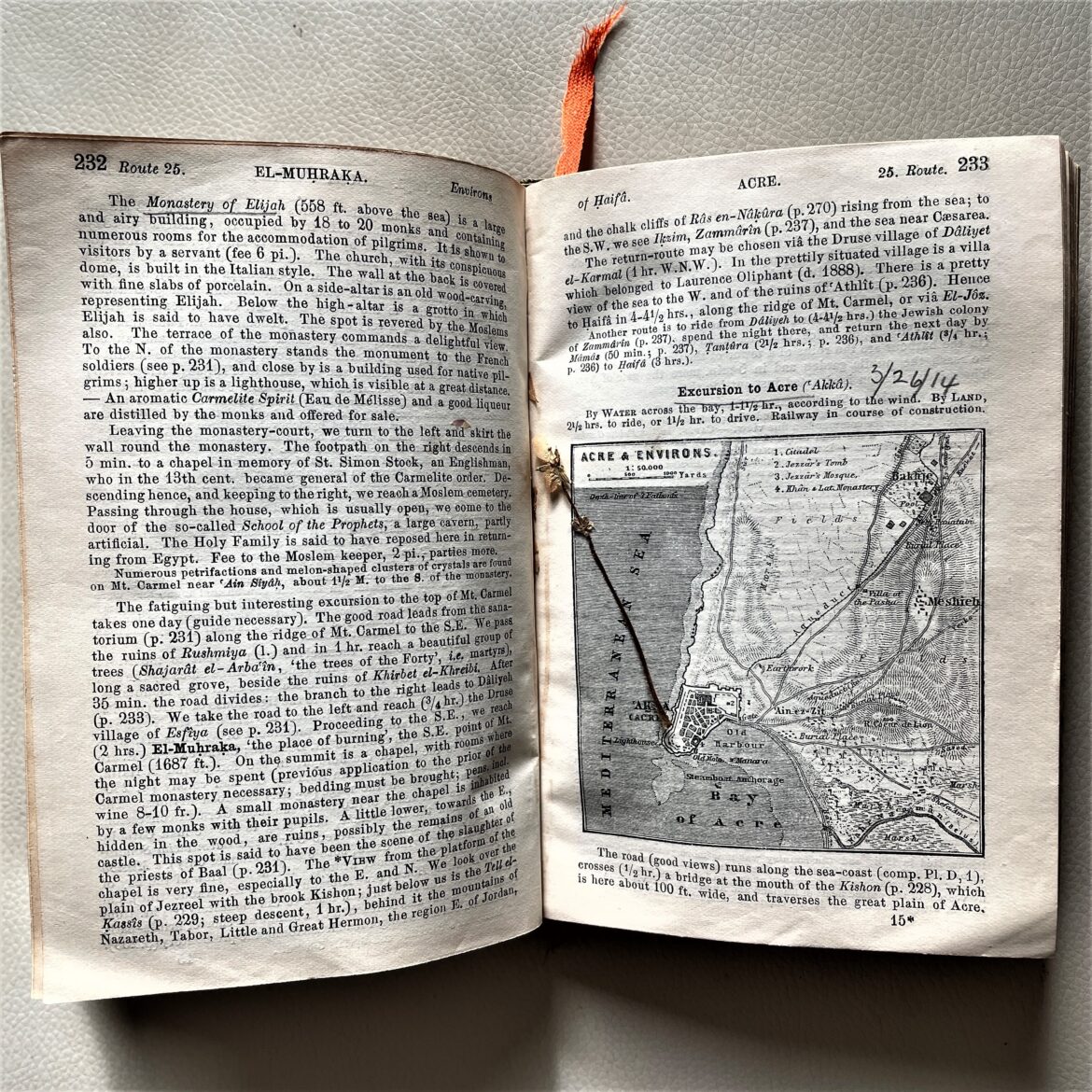
Whoever Wetherald was, he or she was likely religious as on the last page there are some notes: “The Talisman; Song of the Syrian Guest; The Koran Christ – Osborn; D Murray– Holy Land & Egypt; Bless Him.” The Talisman is a story by Sir Walter Scott published in 1825 and set at the time of the Crusades; The Song of Our Syrian Guest was published in 1904 on a Christian theme.
I can imagine Mr. or Miss Wetherald and companions, tired from traveling by carriage and likely the famous Hejaz railway, enjoying a picnic arranged by the dragoman with thick coffee or weak tea (cucumber sandwiches?) as they reclined on a rug overlooking a grove of olive trees and evocative ruins unaware of the coming storm that would engulf much of the world. Their tour is good fodder for a novel for sure, but should it be a romance or a thriller?
All photos copyright Judith Works

Jane Nesvig
Thank you, Judith, for the delightfully engrossing descriptions of a few from your travel book collection.